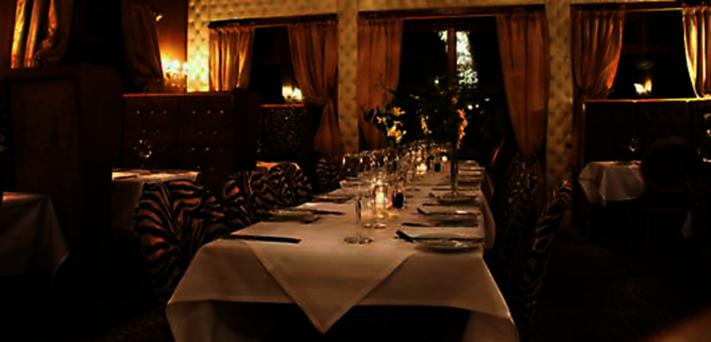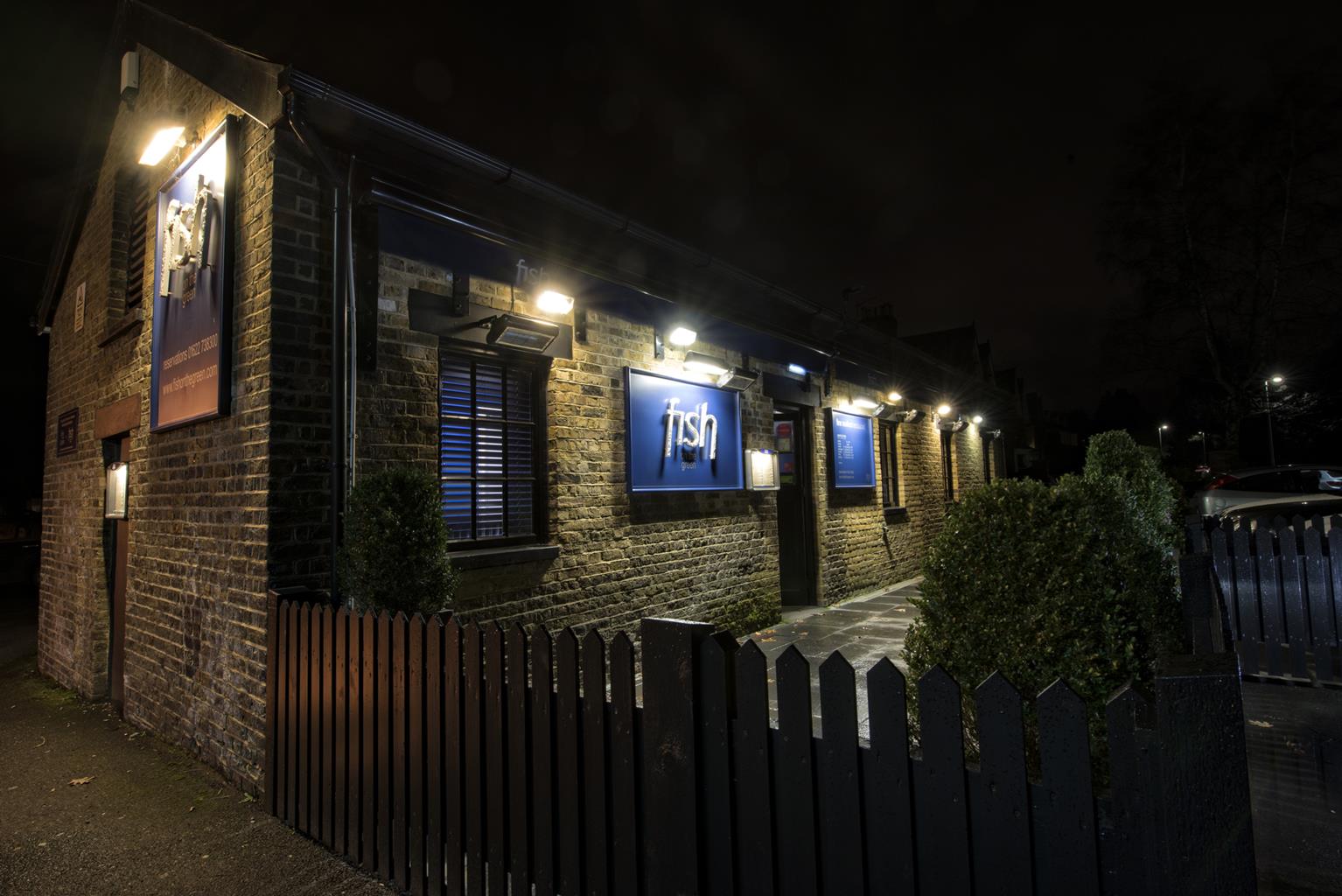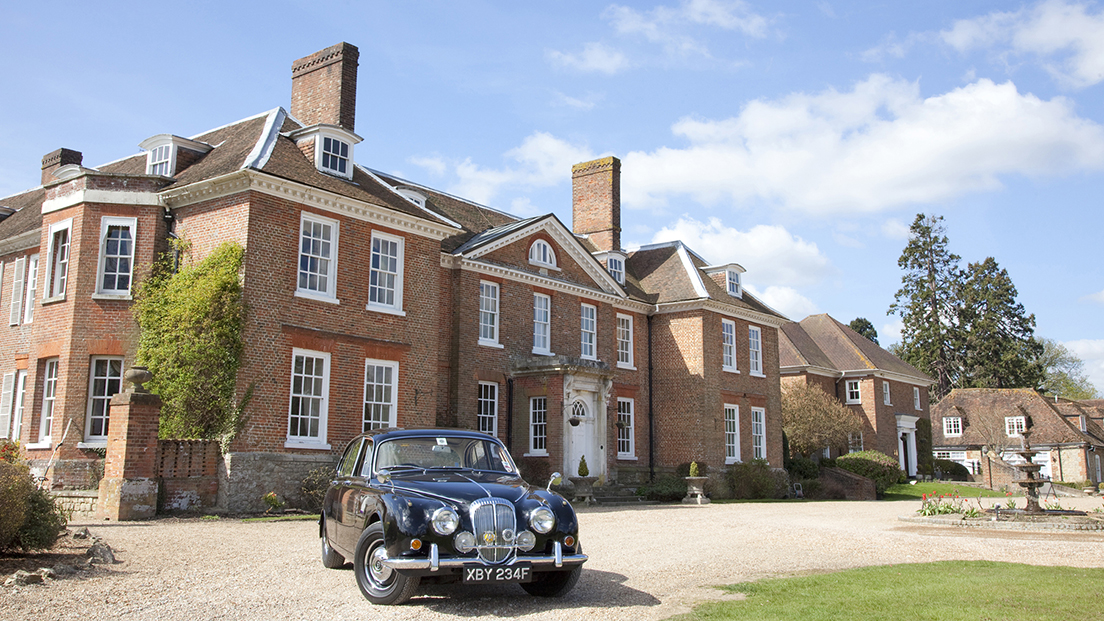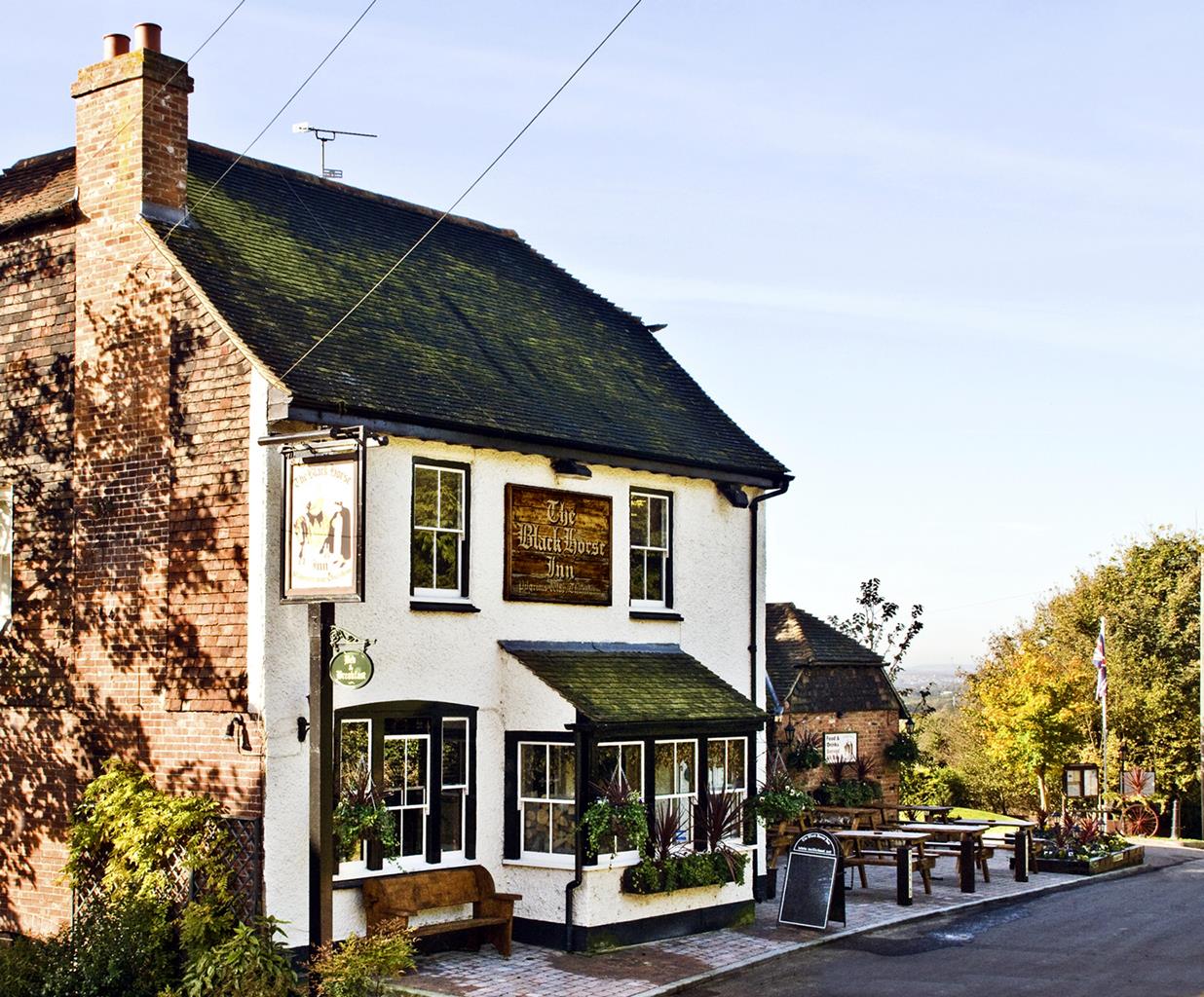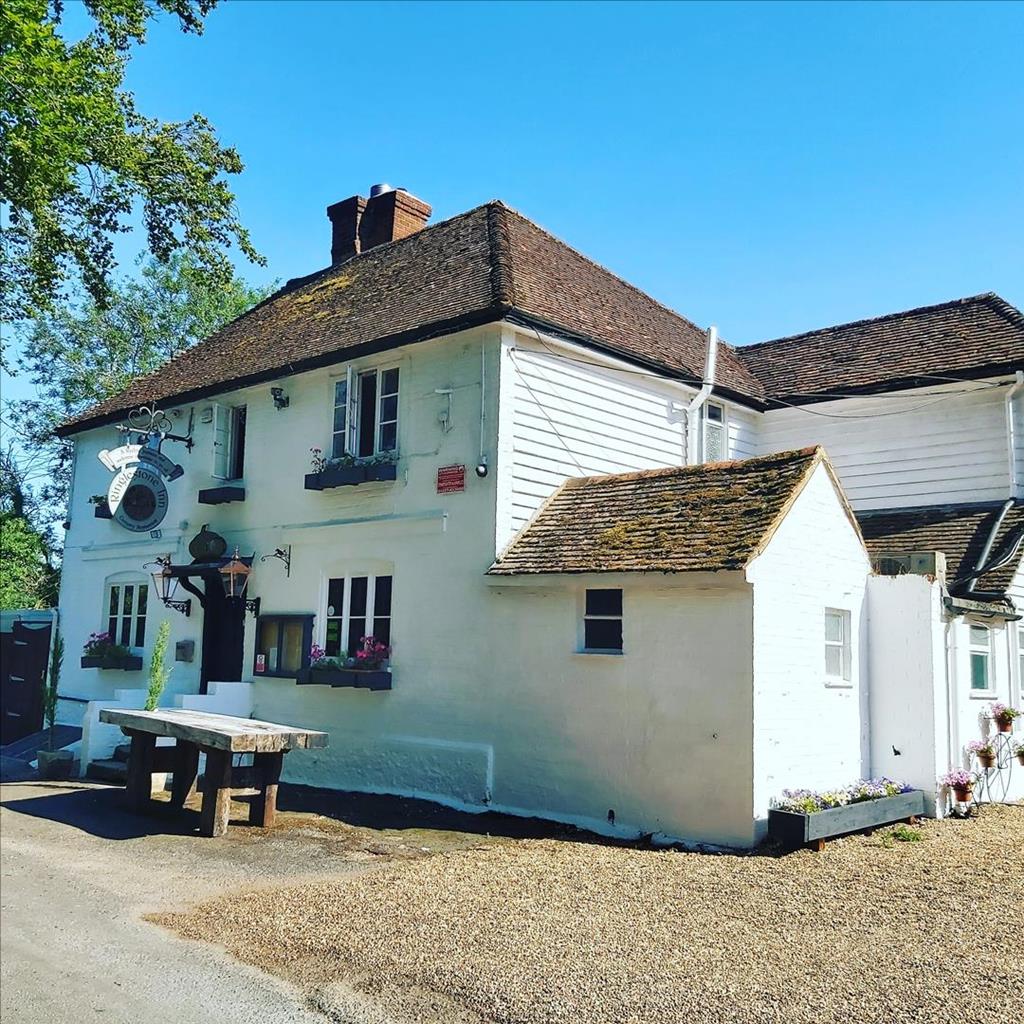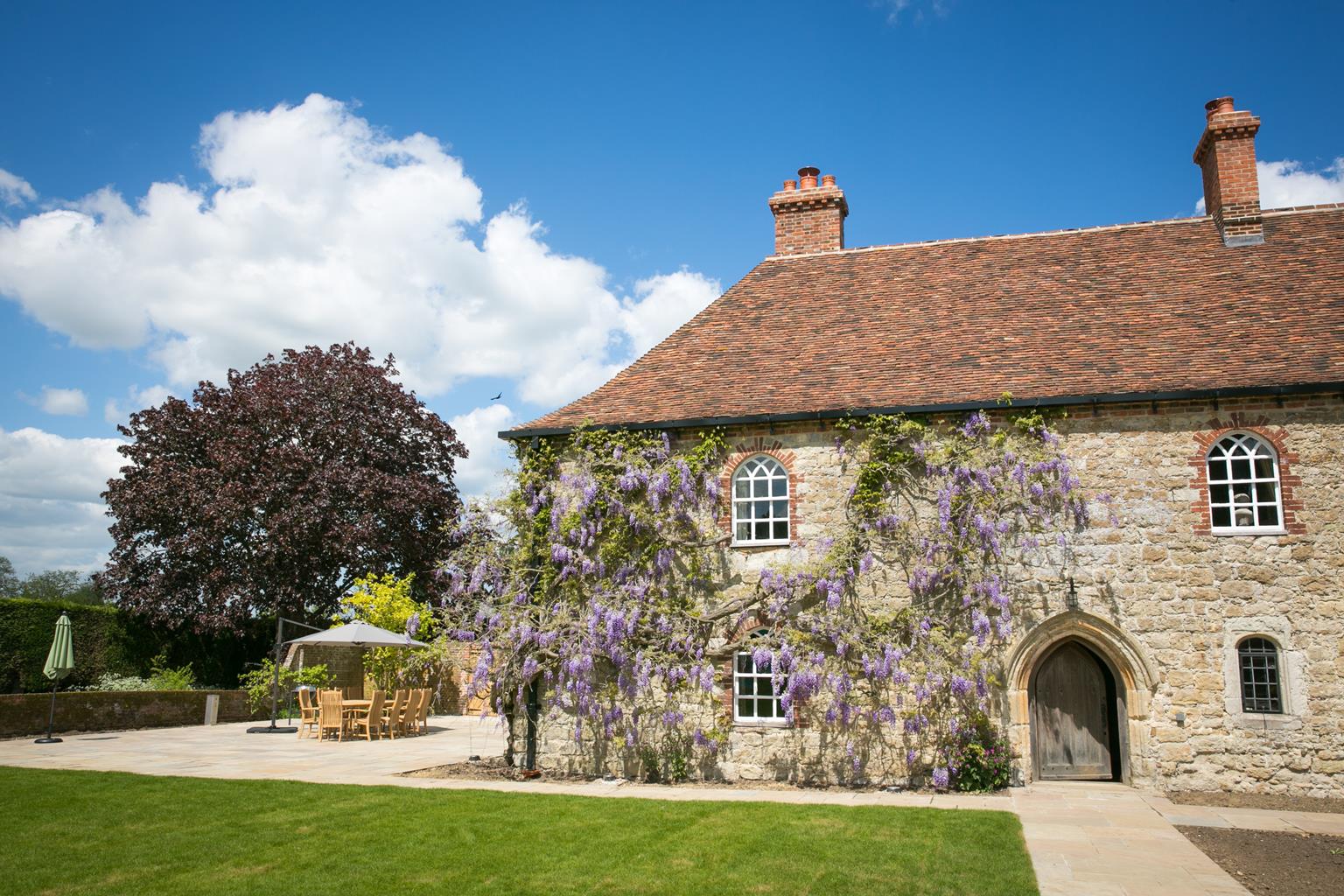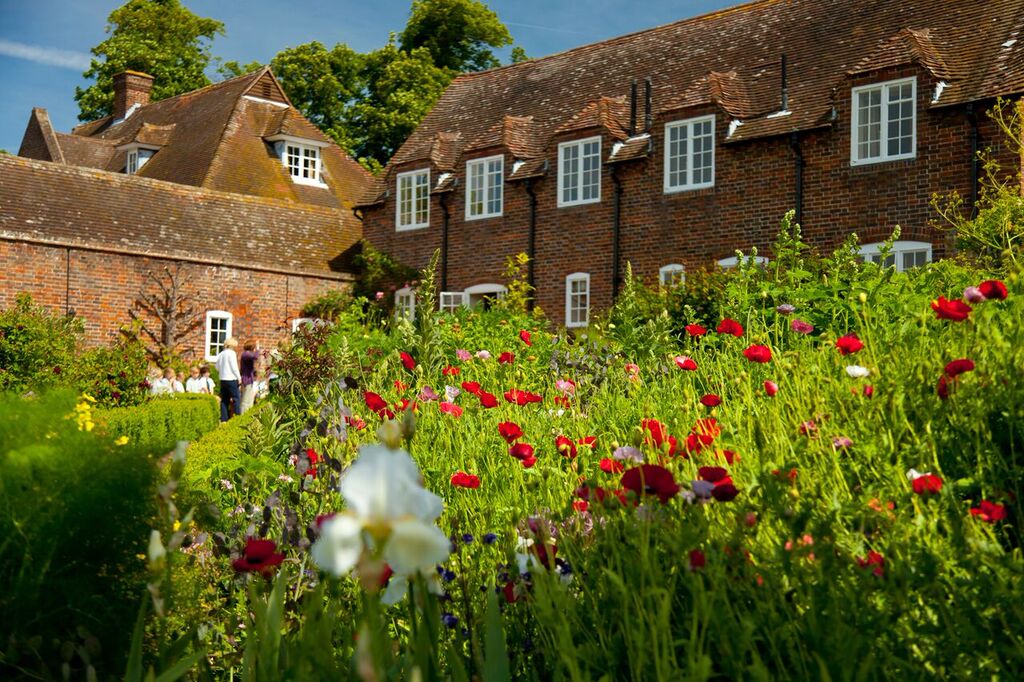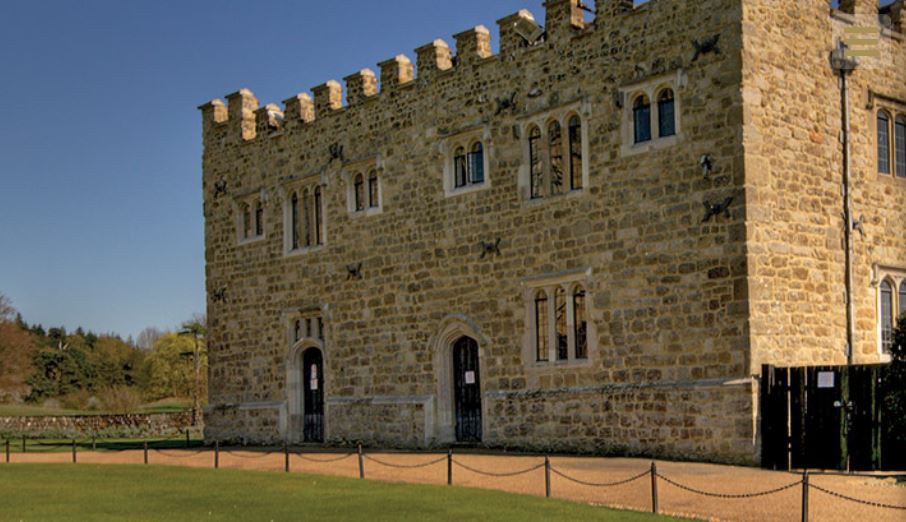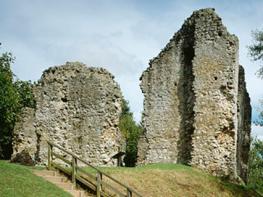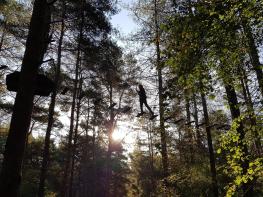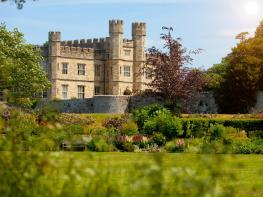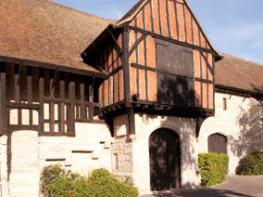Battel Hall is a truly unique property set in a secluded location on the edge of the Leeds…
A stroll around Sutton Valence

4 miles (6.4kms)
About the walk
You might expect a man who revolutionised the sporting world to be buried somewhere grander than a sleepy little churchyard in rural Kent. But that's not the case with John Willes, whose grave you will encounter at the end of this walk. Never heard of him? Then read on.
John Willes was a local man and a keen cricketer. Kent has always been at the forefront of English cricket and the first recorded inter-county match was played between Kent and Surrey in 1709. Willes, keen to perfect his batting skills, used to practice in a barn, getting his sister Christina to bowl to him. It was then the convention to bowl under-arm, but Christina used to wear a crinoline and the hooped skirts got in the way, making it difficult for her to send the ball very far. She came up with the idea of flinging the ball over her head instead and Willes was surprised to find that it travelled about twice as fast.
Willes decided to adopt the style himself and, in a match at Maidstone in 1807, he bowled over-arm for the first time. The spectators were horrified and invaded the pitch, apparently pulling up the stumps to prevent him continuing. After that the MCC ruled that balls should always be bowled under-arm, but Willes refused to give up his unconventional style. In 1822 in a match at Lord's, Willes bowled over-arm and was given 'no ball'. He threw a rather undignified tantrum, chucked the ball on the ground and flounced off the pitch, declaring that he would never play cricket again.
In the end, of course, the style was adopted universally and Willes continued to play, acting as coach to another great Kentish cricketer Alfred Mynn. Willes died in 1852 and is buried in St Mary's churchyard in Sutton Valence, which you reach by crossing the busy road at the end of this walk. His is the first grave you see when you enter the graveyard. It's inscribed with the words: 'patron of all manly sports and the first to introduce round arm bowling in cricket'. His sister isn't mentioned.
The Willes were not the last Kentish people to play a part in cricketing history. When the Ashes were first brought to England, they were initially kept in an urn on the mantelpiece, in the home of the captain in Cobham. One morning a maid apparently knocked them over and the Ashes spilled into the fireplace. She grabbed a handful of ash and popped it into the urn. The ashes from that Kentish fireplace are still said to sit at Lord's today.
Walk directions
From the converted church in the centre of the village, turn right down the lane, then left at the bottom to pass the ruined castle. Dating back to the 12th century, it was built to guard an important medieval trading route. Continue to the end of the lane, and then bear right. Where the road bears downhill, continue walking straight ahead along the track. There are plenty of orchards here and it's a lovely sight in the spring when the blossom is out.
Come on to a surfaced area by College Farm. Keep walking ahead until you reach the road and then turn right. Walk downhill, then at a right-hand bend go through a gate on your left.
Stroll along the top of the orchard and go through a gap in the hedge. Pass a pond on the right and soon pass through a gate to reach the road. Turn left and, after a few paces, take the footpath on the right.
Go through the gate into the field and follow the fence line to reach a gate and woodland. Pass a pond on your left and continue ahead until you go through a gate into a field. Bear slightly left, go through a gateway, then continue ahead with the large house away to your left. Soon bear off right to locate a waymarker in the trees. Follow the field-edge to a gate and the road.
Cross the road, go through the gate, then continue ahead through two more gates to the next road. Turn left to follow the lane uphill for 600yds (549m). Just past a house turn left through a wooden gate on to a public bridleway, signposted 'Greensand Way'.
Follow the concrete drive for a few paces, keeping ahead along an enclosed grassy path where it swings left. Go through a gate and follow the field-edge to take you on to Charlton Lane. Go through a gate, cross the road and walk up Church Road ahead – signed 'Sutton Valance'. Follow the road past East Sutton church and, at a T-junction, take the path opposite into a field.
Follow the obvious path towards some trees and, at a crossing of tracks, go straight on along the clear track. At some trees, follow the path diagonally right across the field to join the road in the field corner. At the crossroads turn right to get back to Sutton Valence village. To reach St Mary's Church walk through the village, cross the busy A274 and take the footpath immediately ahead. Return to the village centre to finish your walk.
Additional information
Field-edges and quiet lanes
Orchards, oast houses and rolling fields
Under control on farmland and on lead where requested
OS Explorer 137 Ashford
Village streets – it can get pretty crowded
None on route
WALKING IN SAFETY
Read our tips to look after yourself and the environment when following this walk.
Find out more
Also in the area
About the area
Discover Kent
The White Cliffs of Dover are an English icon – the epitome of our island heritage and sense of nationhood. They also mark the point where the Kent Downs AONB, that great arc of chalk downland stretching from the Surrey Hills and sometimes known as ‘the Garden of England’, finally reaches the sea. This is a well-ordered and settled landscape, where chalk and greensand escarpments look down into the wooded Weald to the south.
Many historic parklands, including Knole Park and Sir Winston Churchill’s red-brick former home at Chartwell, are also worth visiting. Attractive settlements such as Charing, site of Archbishop Cranmer’s Tudor palace, and Chilham, with its magnificent half-timbered buildings and 17th-century castle built on a Norman site, can be found on the Pilgrim’s Way, the traditional route for Canterbury-bound pilgrims in the Middle Ages.
In the nature reserves, such as the traditionally coppiced woodlands of Denge Wood and Earley Wood, and the ancient fine chalk woodland of Yockletts Bank high on the North Downs near Ashford, it is still possible to experience the atmosphere of wilderness that must have been felt by the earliest travellers along this ancient ridgeway.
Nearby stays
Restaurants and Pubs
Nearby experiences
Recommended things to do
Why choose Rated Trips?
Your trusted guide to rated places across the UK
The best coverage
Discover more than 15,000 professionally rated places to stay, eat and visit from across the UK and Ireland.
Quality assured
Choose a place to stay safe in the knowledge that it has been expertly assessed by trained assessors.
Plan your next trip
Search by location or the type of place you're visiting to find your next ideal holiday experience.
Travel inspiration
Read our articles, city guides and recommended things to do for inspiration. We're here to help you explore the UK.


